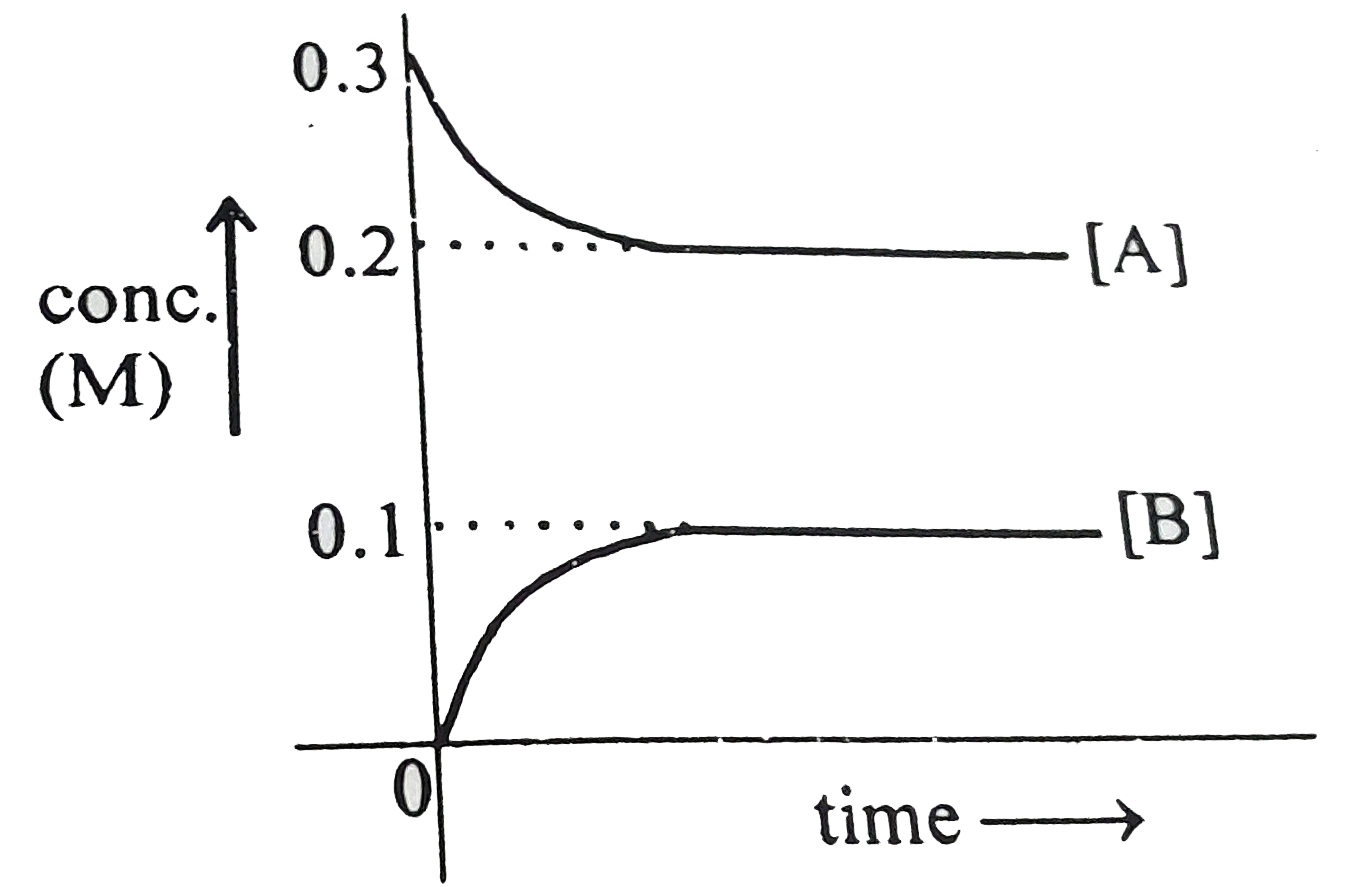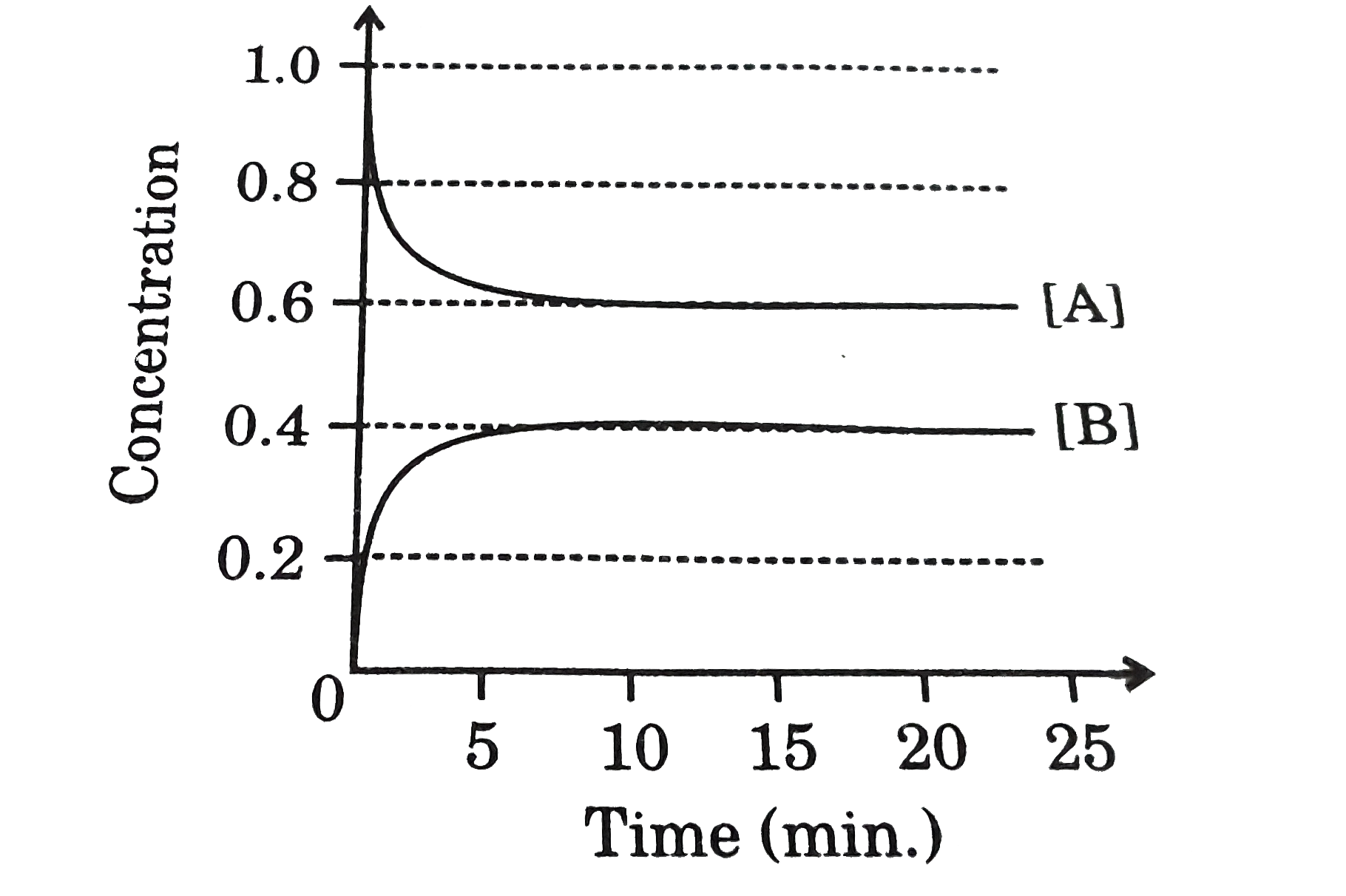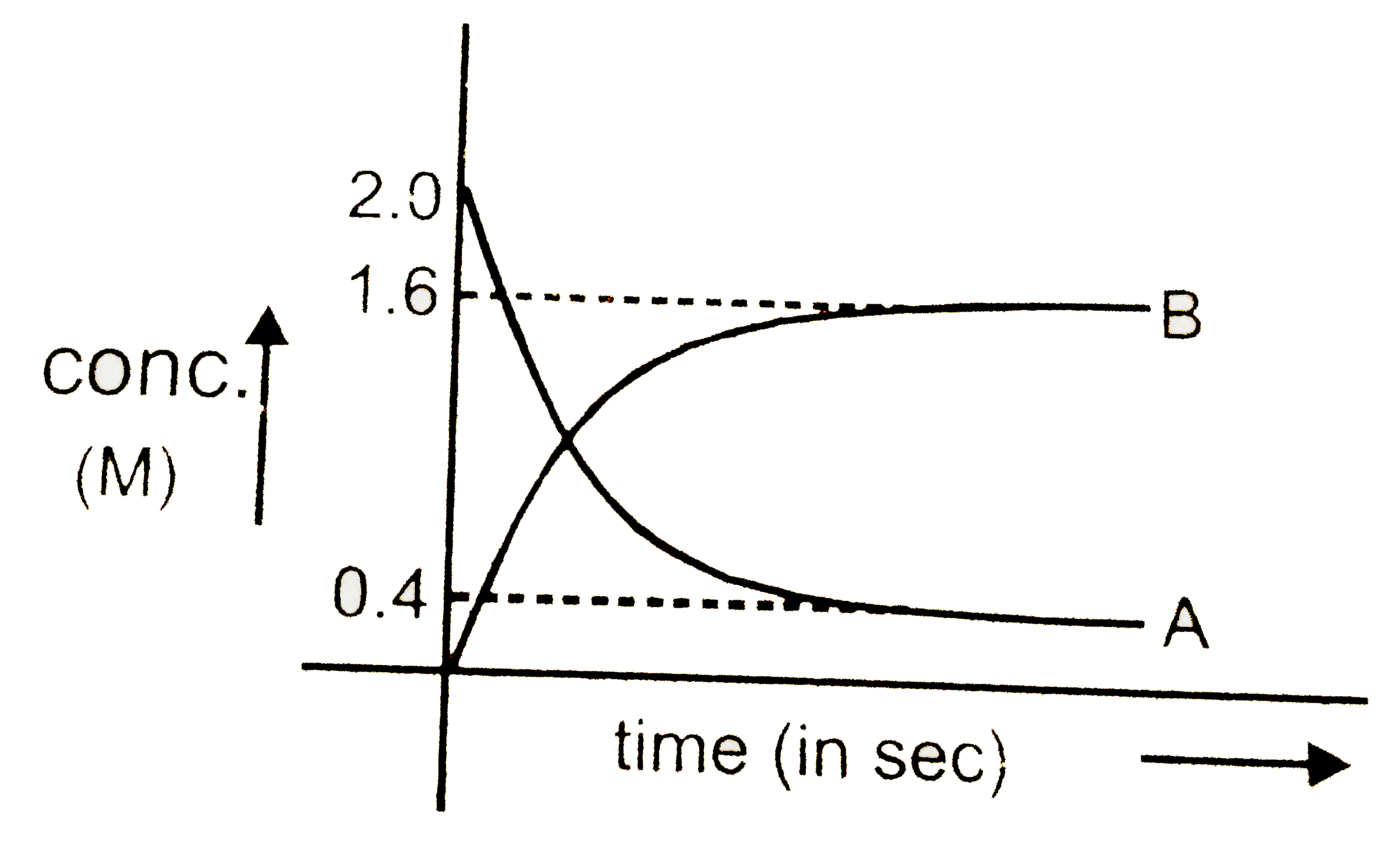Consider a reversible reaction :
Ak1⇐⇒k2B
Which is a first order in both the directions (k1=1.383×10−2min−1). The variation in concentration is plotted with time shown below.

Calculate the time (in minute) at which 25% of A would be exhausted. [ln2=0.69]
keq=0.10.2=12=k1k2
k2=23×1.38×10−2
ln0.10.1−0.075=(k1+k2)t
2×0.69=1.38×10−2×t
t = 100 min. ]
Topper's Solved these Questions
- TEST PAPERSBOOK - BANSALCHAPTER - TEST PAPERSEXERCISE - MATHS SECTION-3 PART-A [SINGLE CORRECT CHOICE TYPE]
10 Videos
- TEST PAPERSBOOK - BANSALCHAPTER - TEST PAPERSEXERCISE - MATHS SECTION-3 PART-B [MULTIPLE CORRECT CHOICE TYPE]
5 Videos
- TEST PAPERSBOOK - BANSALCHAPTER - TEST PAPERSEXERCISE - CHEMISTRY SECTION-2 PART-A [MULTIPLE CORRECT CHOICE TYPE]
5 Videos
- PROBABILITYBOOK - BANSALCHAPTER - PROBABILITYEXERCISE - All Questions
1 Videos
- THERMODYNAMICSBOOK - BANSALCHAPTER - THERMODYNAMICSEXERCISE - Match the column
7 Videos
Similar Questions
For a reversible first-order reaction,
AK1⇐===⇒K2B,Kf=10−2s−1andBeq.Aeq.=4,
If A0=0.01ML−1 and B0=0, what will be concentration of B after 30sec?
View SolutionIn a reversible reaction AK1⇐⇒K2B the initial concentration of A and B are a and b in moles per litre and the equilibrium concentrations are (a-x) and (b+x) respectively, Express x in terms of K1,K2,aandb.
View Solution
Knowledge Check

For the reversible reaction Akf⇐===⇒kbB (having Ist order in both direction) the concentration as a function of time are given for a certain experimantal run.
Calculate [B] at time t=15min.
[Given:kb=3min−1and1e=0.37]A0.37B0.153C0.2D0.252For a reversible reaction Ak1=4×102s−1⇐======⇒k2=2×102s−1B initial concentration of A is 21 mol L−1 . Select the correct statement:
AEquilibrium concentration of A is 14 mol L−1BEquilibrium conentration of B is 14 mol L−1.CThe concentration of A reduce by 50% of equilibrium concentration after 11.55 sec .DThe concentration of A reduce to 50% after 23.1 sec.For the reversible reaction : AoK1⇐⇒K2B,k1=0.02min"^(-1) and k2=0.03−1min . The reaction is stated with A only .If the half life of such reaction is defined as the time in which half of the equilibrium amount of B is formed , then , what is the half life of reaction ?
A34.65 minB23.10 minC13.86 minDInfinite
The rate constant of a reaction is 0.69×10−1−1min and the initial concentration is 0.2mol l−1. The half-life period is
View SolutionFor the reaction AK1sec−1⇐==⇒k2sec−1B following graph is given,
k1=4×10−∘sec−1. Which is/are correct statement (s) (In 2=0.7 , In 8/7 =0.14)

View SolutionFor a reversible reaction (first order in both directions)
Ak2⇐⇒k1B
k1 and k2 are the rate constant.
If equlibrium constant (K) is greater than unity, then :
View SolutionIn a reversible reaction AK1⇐⇒K2B the initial concentration of A and B are a and b in moles per litre and the equilibrium concentrations are (a-x) and (b+x) respectively, Express x in terms of K1,K2,aandb.
View SolutionFor a reaction k is 2.5×10−31mol×sec.
The order of reaction is
View Solution
